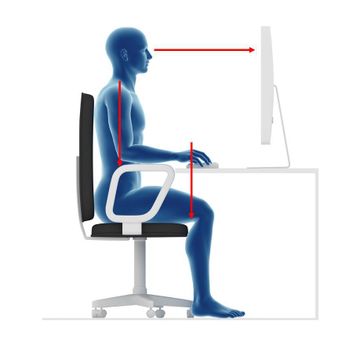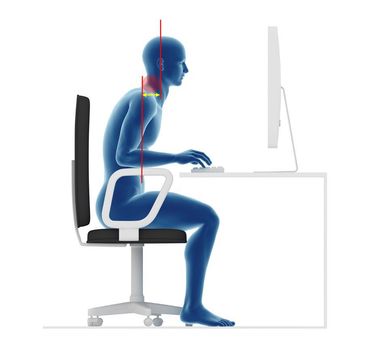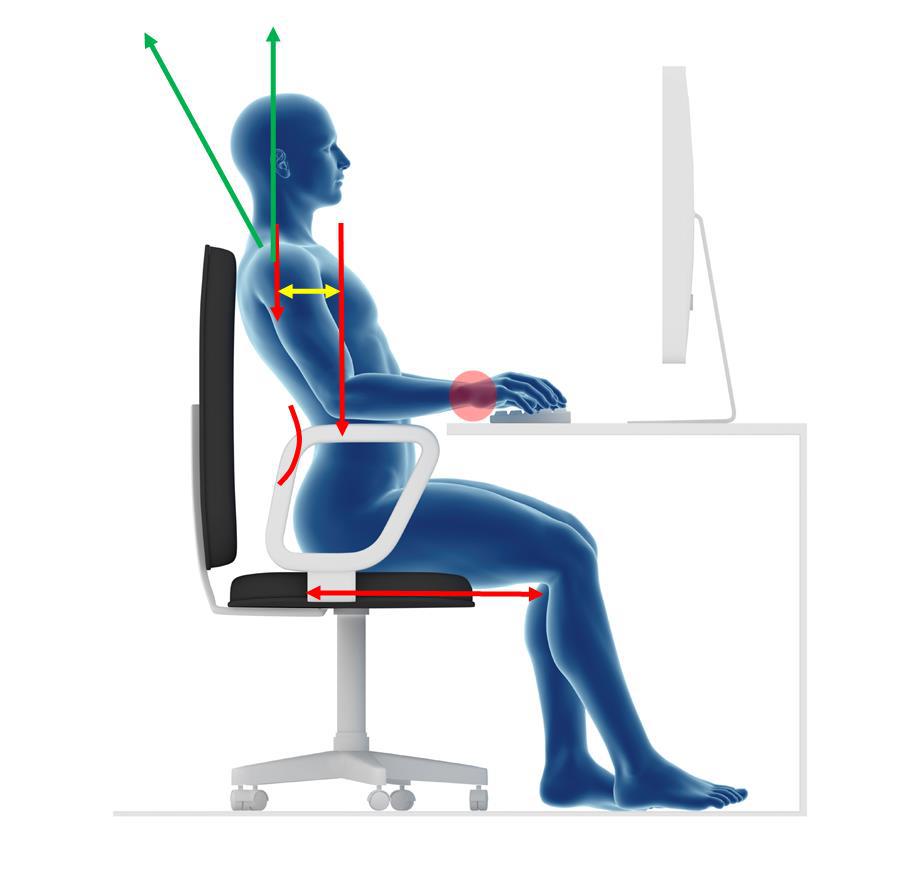Contact Us
517-353-5008
olinpt@msu.edu
SITTING AT A DESK

We sit at desks to perform tasks and usually it requires a level of concentration whether it is writing, typing, reading or perhaps craftwork.
This distraction reduces our awareness of how we hold ourselves and increases the risk of developing postures that may be harmful.

We have all seen pictures like this demonstrating the ideal posture when at a desk, and it is true...but there is more to it.
This is an ideal starting position with the back straight, shoulders relaxed and elbows around 90°. But it requires muscle work to stay in an upright, erect position...and muscles get tired over time.
This is an ideal starting position with the back straight, shoulders relaxed and elbows around 90°. But it requires muscle work to stay in an upright, erect position...and muscles get tired over time.

As the large spinal muscles relax, the spine hunches over and places the head in a more forward position. The neck/shoulder muscles then have to work harder to keep the head up and subsequently may lead to tension and strain.

In this example, sliding forwards in the chair, reduces the thigh support, and increases pressure on the buttocks. Increased low back arching changes the position of the trunk as it leans on the back rest. This leads the head to be more forwards (relative to the trunk) and may cause neck pain. In addition the arm reaches farther forward and without proper support may cause shoulder pain and increased contact pressure at the wrists.
Slouching is the body’s natural way of relaxing the muscles. There are many postures adopted and none are bad as long as the individual is comfortable. HOWEVER if these postures are sustained frequently enough, adaptive changes WILL happen to joints and soft tissues leading to more permanent deformity and the likelihood of a persistent pain.
Tips:
- Get out of the chair every hour—this is the best practice. Removing yourself from the chair and desk for a few minutes every hour significantly helps.
- Take ‘micro breaks’. Stop typing for 30 seconds every 15 minutes if your job requires a lot of keyboard work.
- Become more aware of posture. Remembering that it is the sustained postures that usually cause problems—remind yourself to sit up when you catch yourself slouching. Breaking up the pattern of prolonged slouching is usually enough.
- Set a timer on your phone or counter (see Apps)